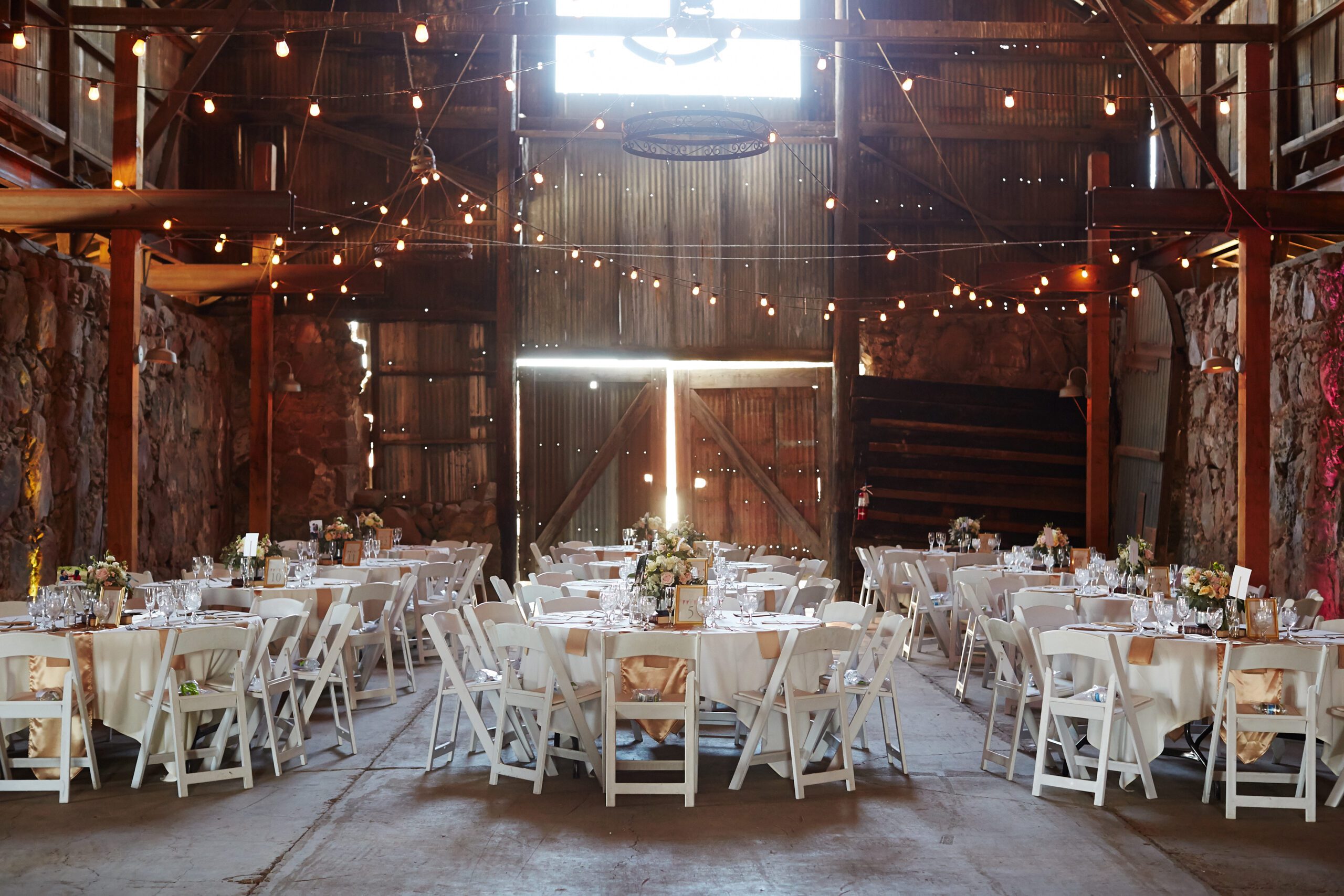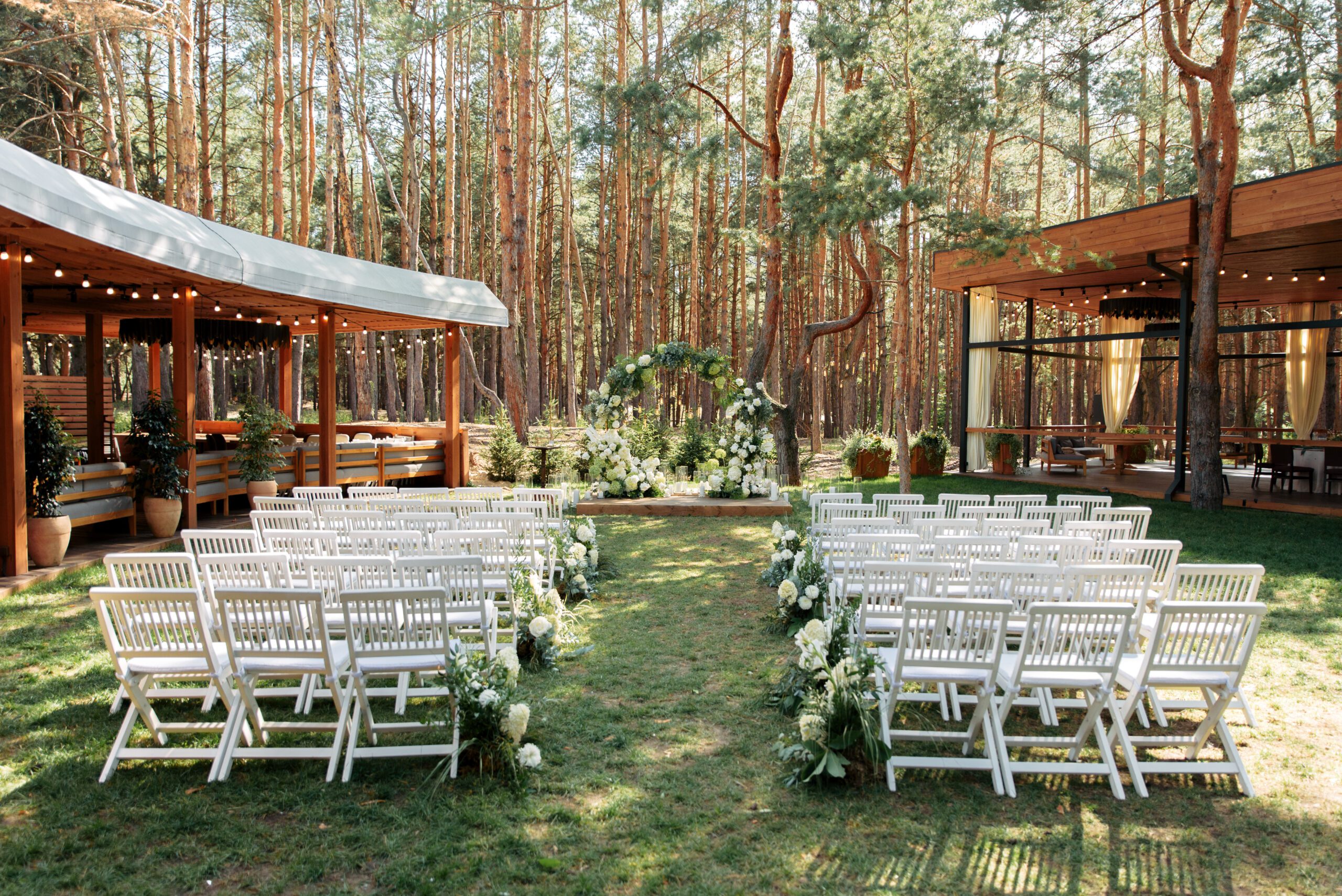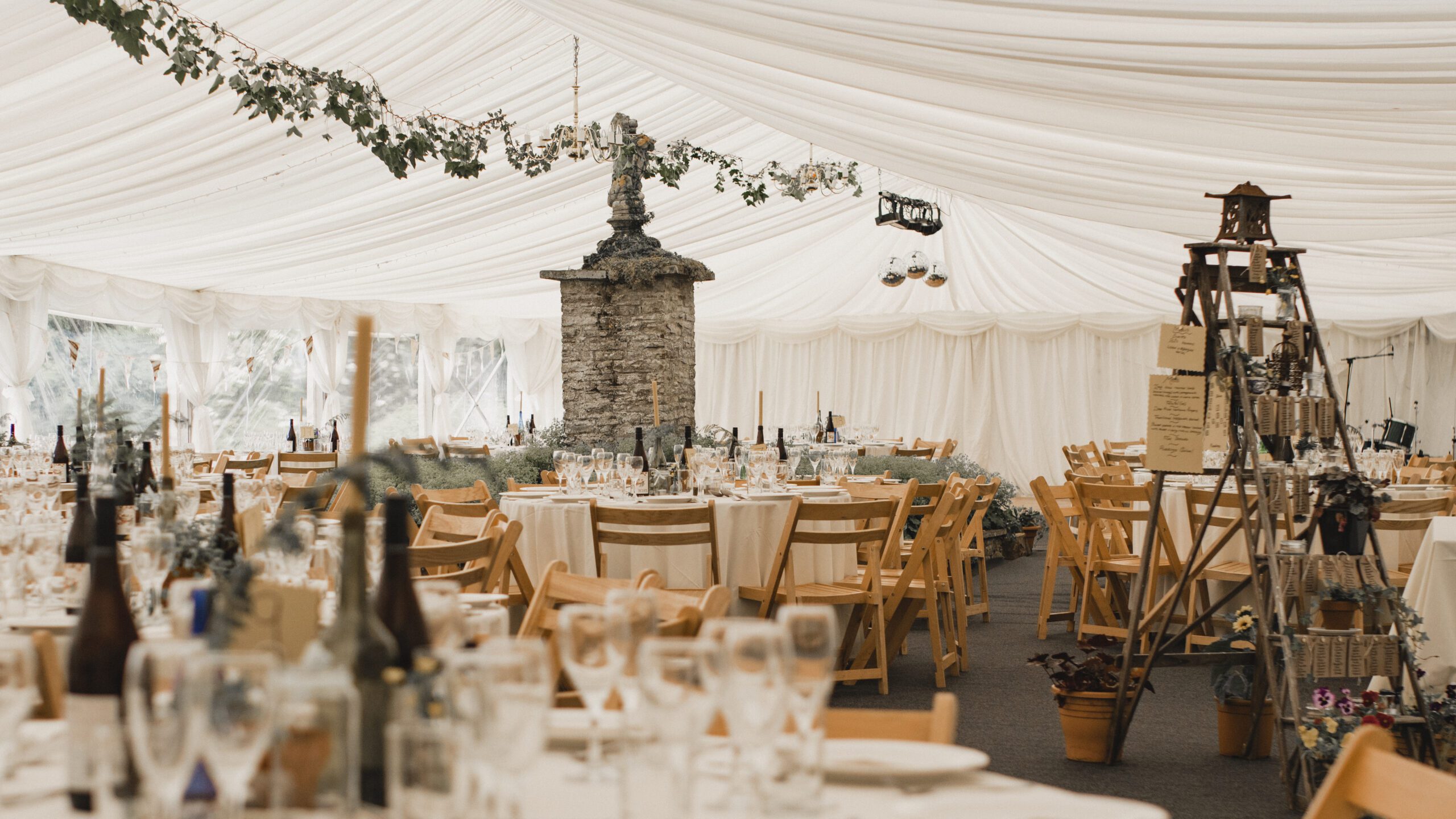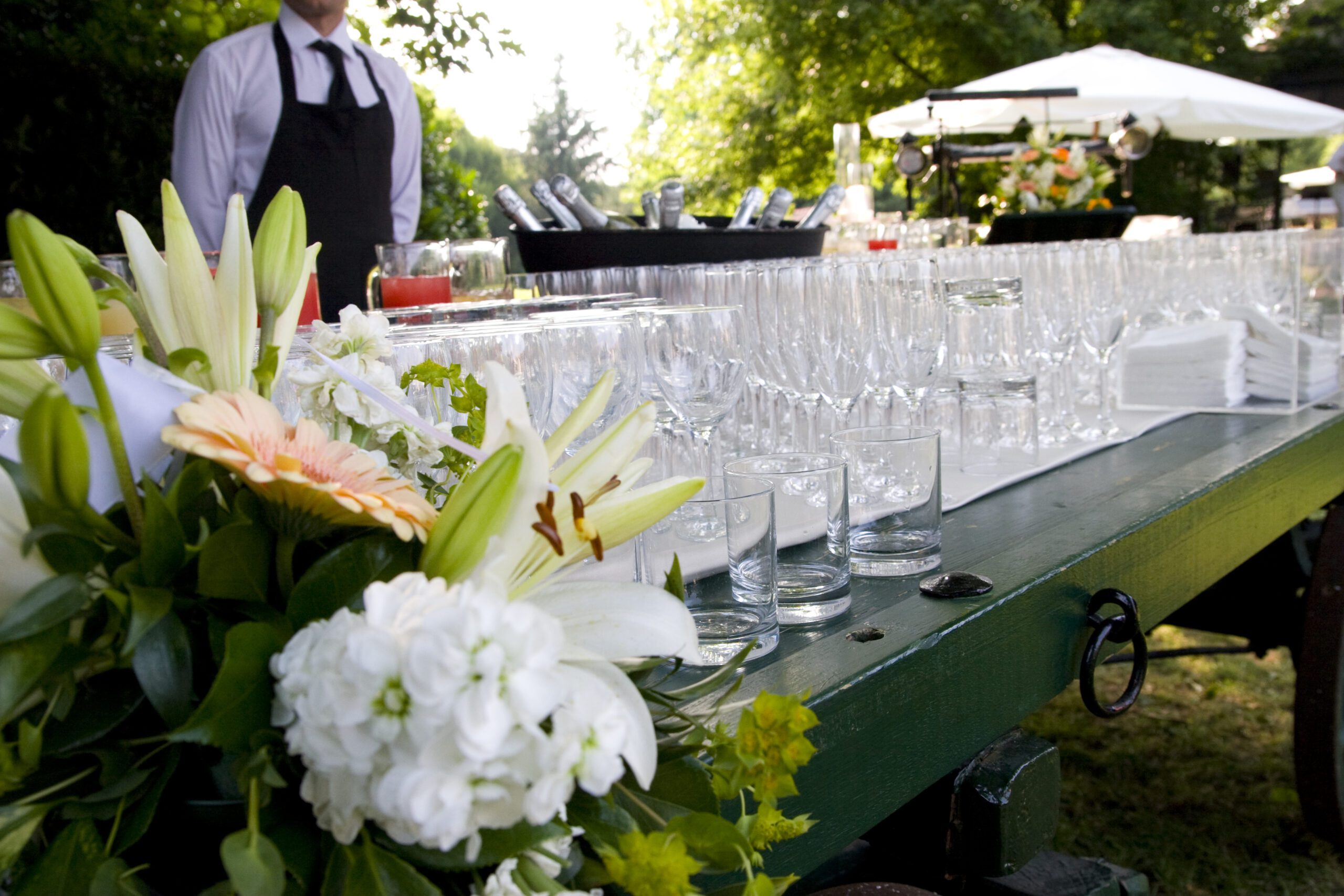Are you looking for a lucrative business venture with low start-up costs? Look no farther than the table and chair rental market! This industry focuses on providing essential items for events like weddings, parties, and corporate gatherings. While starting a rental business can be expensive, ranging from $20,000 to $100,000 in startup costs, a business model in which people hire tables and chairs for a short time is a low-cost way to break into the event rental industry and build a successful business from the ground up.
As you consider launching your own table and chair business, it’s important to understand that success comes from good planning and knowing what your customers need. In this guide, we’ll show you step-by-step how to get your business off the ground, focusing on what makes a table and chair rental service thrive:
- Step 1: Lay the Groundwork
- Step 2: Create a Business Plan
- Step 3: Consider Operational Logistics
- Step 4: Invest in Inventory
- Step 5: Perform Legal and Administrative Setup
- Step 6: Market Your Business
Step 1: Lay the Groundwork for Your Table and Chair Rental Business
Always Do Market Research
Before you dive into the nitty-gritty of starting a table and chair rental business, it is crucial to understand your local market and what kind of demand you are looking at. Your target audience will guide every decision you make, from inventory acquisition to how you price your services.
Here’s how to start your research:
- Determine which events will most often require your rental services. Common events include weddings, corporate functions, community events, and private parties. To find out what kinds of events are most common in your area, check out community Facebook groups and keep an eye out for advertisements while you’re out and about.
- Once you’ve determined what types of events you will cater to, understand who your customers are. Are they event planners, businesses, schools, or families? Learn their preferences and use that knowledge to carve out your marketing plan.
- Identify existing rental businesses in your area and find out what they are offering. Ask yourself how you can set yourself apart; is there anything you can do differently or better? This will help you find a niche and get a foothold in the market.
- Research popular event themes and styles geared toward your target audience. For example, rustic weddings might require a different style of tables and chairs compared to a corporate gala. If you’re not sure what your audience might like, try posting on Facebook or Reddit to get feedback from the community!
By thoroughly understanding the market, you can position your table and chair rental business for success. This foundation is not just about avoiding pitfalls, but also about seizing opportunities as they arise.
Refine Your Business Concept
A key aspect of launching a successful table and chair rental business is refining your business concept to stand out in the market. First and foremost, you need to decide what kind of inventory you plan to offer. Will you focus on high-end products, or target audiences who need standard inventory?
If you choose to offer high-end products, your target market will likely include upscale events such as weddings, corporate galas, and high-profile parties. High-end rentals can command higher prices and potentially yield greater margins.
Opting for standard inventory targets a broader market, including casual events, small parties, and business meetings. These items are generally more durable and cost-effective, which can lead to higher turnover rates and consistent rental opportunities. Standard inventory requires efficient logistics, competitive pricing, and quick setup services.
It is important to note that each of these options has its benefits! It all depends on who your target audience is, and what kinds of events you want to cater to. Once you’ve made your decision, think about how you will make your table and chair business stand out in your market.
Tips on how to distinguish your offerings:
- Differentiate your offerings by adding unique features or services that are not widely available in your area. For example, offer custom color options, flexible rental packages, or bundled services that include setup and teardown.
- Regularly collect feedback from your customers to understand their needs and adjust your inventory and services accordingly. This can help you stay relevant and preferred by your clients.
- Utilize technology to give customers more convenience, such as offering virtual event planning tools, online reservations, and digital contracts.

Step 2: Create a Business Plan for Your Table and Chair Rental Business
What is a Business Plan?
A business plan is a document that outlines what a business wants to achieve and how it plans to do it. Think of it as a roadmap for the business, showing the direction it wants to go and the steps it will take to get there. This plan includes important details like the business’s goals, the types of products or services it will offer, who its customers are, and how it will attract these customers. It also covers how the business will manage its money, including how much money it needs to start and how it expects to make a profit.
Essential Components to Include in Your Business Plan
- What Your Business Does: Give a quick overview of your business. Include what you aim to achieve (your mission), how you’ll operate (your business model), the main services you’ll provide, who you’ll serve (your target market), and your financial goals.
- What You Offer: Describe what types of tables and chairs you plan to rent out. Mention any special features of your services, like flexible rental periods or special package deals.
- Understanding the Market: Use the insights from your initial research (Step 1). Talk about what people in your area want, what other rental businesses offer, and how you can better or better meet customer needs.
- Who Does What: Outline who’s involved in the business and what they do, even if it’s just you at the start. If family members or friends will help, mention their roles. Explain how you plan to handle orders, customer service, and deliveries.
- Getting Customers: Describe how you will let people know about your business. This might include creating a simple website, using social media, or putting flyers in local community centers. Talk about any partnerships, like with event planners or venues, and any special promotions you might run.
- Money Matters: Estimate how much money you expect to make (revenues), what you’ll need to spend (expenses), and when you think your business will start making a profit (profitability). Include the costs to start up (like buying your initial set of tables and chairs and any costs to set up a website) and a simple plan for when you expect to start covering these costs and earning money (break-even analysis).
Define Your Budget
When starting a new business, one of the most critical steps is defining your budget. This detailed plan for your expected income and expenses helps ensure that you can cover your startup costs and remain financially viable as your business grows. It gives you a clear overview of your financial resources, what you need to spend money on, and when you might need additional funding.
Here’s a breakdown of what you need to consider in your first budget for your table and chair rental business:
Initial Costs
- Buying Your Inventory: This is the cost of purchasing your first sets of tables and chairs. Shop around to find the best deals that meet your needs and budget.
- Setting Up Shop: If you’re working from home, you might need minimal setup costs, but consider any necessary upgrades like storage racks in your garage or a shed to protect your tables and chairs.
- Getting the Word Out: Budget for simple marketing efforts like creating a basic website, printing flyers, or making business cards.
- Transportation: If you don’t have a vehicle suitable for deliveries, you might need to consider renting one as needed or factoring in delivery costs.
Ongoing Expenses
- Maintenance Costs: Set aside money for cleaning supplies and minor repairs to keep your inventory in good condition.
- Marketing: Plan for ongoing marketing expenses such as website hosting fees, online ads, or new flyers for promotions. Many rental startups spend around $100-$150 on Google Ads that bring in leads to their business.
- Utilities: If you’re using extra space at home for the business, there might be a slight increase in your utility bills, like electricity and water.
Financial Management
- Tracking Your Money: Use simple tools like a spreadsheet to keep track of what you’re earning and spending. There are also free or low-cost accounting software options like QuickBooks suitable for small businesses.
- Consider Professional Help: As you start earning more or if you find financial management overwhelming, you might consider consulting with a professional accountant. Some offer free or low-cost consultations that can help you get set up more effectively!

Step 3: Consider The Operational Logistics of a Table and Chair Rental Business
Storage and Delivery
If you’re just starting a table and chair rental business, the chances that you’re thinking of renting a warehouse are slim. So, let’s talk about the logistics of starting a table and chair rental business from home! Starting a rental business from home requires streamlined operations that maximize efficiency in a limited space.
If you’re starting a rental business from home, use your garage, shed, or a designated extra room in your home to store your inventory. Ensure it’s organized and protected from damage, perhaps using racks and covers to keep items clean and orderly.
If you don’t own a delivery vehicle, consider renting one as needed or hiring a delivery service for larger events. This helps keep initial costs down. If you’re comfortable with customers coming to your home, consider allowing them to pick up their own orders when desired.
You can also offer to set up the tables and chairs for an additional fee. This service can set you apart from competitors and provides an extra touch of customer care that can lead to repeat business.
Customer Service
As for customer service, set up a dedicated business phone line or email to handle bookings and inquiries. Being prompt and professional in your communications can greatly enhance customer satisfaction. Ask for customer feedback via simple online forms or follow-up calls. Use this information to refine your services and address any areas needing improvement.
Create a basic website where customers can view your inventory, ask questions, and book rentals. You can do this yourself, or utilize rental management software that has a website option available. Rental management software can also automate email communications, simplifying operations and saving you time!
Inventory Maintenance
Schedule time to inspect and clean your inventory after each rental. This ensures that everything is always ready for the next client and maintains the quality of your products.
Keep basic tools and cleaning supplies on hand to take care of common maintenance tasks yourself, avoiding the need for professional services in the early stages. Here are some basic items and supplies that you should have on hand to maintain and repair tables and chairs:
Cleaning Supplies
- Mild Detergents: For general cleaning of surfaces without damaging finishes.
- Wood Polish: To maintain the luster of wooden tables and chairs.
- Metal Polish: For metallic parts to prevent tarnishing and rust.
- Upholstery Cleaner: For fabric-covered chairs, to remove stains and refresh the fabric.
- Microfiber Cloths: To clean without scratching surfaces.
- Sponges and Brushes: Various sizes for different cleaning needs.
Repair Tools
- Screwdrivers: Both flathead and Phillips heads for tightening loose parts.
- Allen Wrench Set: Often used for assembling and tightening bolts on flat-pack tables and chairs.
- Hammer: For minor adjustments or to fit parts snugly.
- Pliers and Wire Cutters: Useful for adjusting metal components or cutting small wires.
- Glue and Epoxy: For repairs that need adhesion, like fixing wooden or plastic parts.

Step 4: Invest in Inventory
Once you have your niche and business plan in place, it’s time to look into tables and chair options to invest in for your small table and chairs rental business. When selecting suppliers, consider not only the cost and quality of their products but also their reliability and customer service.
Once you invest in your first set of inventory, it is essential to implement a straightforward inventory management system. This system should help you track what items you have, what’s rented out, and when items are due back.
Let’s go into these concepts in more detail:
Choosing a Table and Chair Supplier
Selecting the right suppliers is crucial for the success of your table and chair rental business. The quality of your inventory, its cost, and the reliability of its supply can significantly impact your operations and customer satisfaction.
When looking into a supplier, look at more than just their price. While lower prices can reduce initial expenses, they should not compromise the quality of the products. High-quality items tend to last longer and require fewer repairs, which can save money in the long run.
Additionally, look into the supplier’s track record for fulfilling orders on time and accurately. Avoid suppliers that have a history of being unreliable, as this can increase the risk of inventory shortages during peak seasons. You should also choose a supplier who can scale with your business as it grows. They should be able to handle larger orders and provide additional products as needed without significant delays.
Once you choose a supplier, negotiate terms that benefit both parties. Try to secure discounts for bulk purchases or more flexible payment terms to help manage cash flow. For more information on choosing the best table and chair supplier, check out our blog “Guide to Buying the Best Tables and Chairs”
Inventory Management for Table and Chair Rental Businesses
A straightforward inventory management system is essential to staying organized and maximizing the ROI on your inventory. In the past, small businesses were doomed to rely on pencil-and-paper and manually managed spreadsheets to track inventory levels. However, there are now affordable options for inventory management that make this process much simpler.
Automated inventory management systems provide the following benefits for small rental businesses:
- Instant updates on inventory status, helping you manage availability accurately and respond to customer inquiries quickly.
- Simplifies the process of order entries, modifications, and cancellations, integrating these actions directly with your inventory count.
- Automated customer communications like order confirmations, invoices, payment reminders, and order updates.
- Useful reports that help businesses understand usage patterns, popular items, and seasonal fluctuations, aiding in better business decisions.
When choosing inventory management software, look for options that are specifically designed for rental businesses. These will have features tailored to the unique challenges of rental operations, such as handling return dates, maintenance issues, and item condition reports.
For startups looking to manage costs effectively while benefiting from advanced technology, TapGoods offers a robust solution. Starting at just $19 per month, TapGoods provides a comprehensive suite of tools that cater to the needs of small to medium-sized rental businesses. This cost-effective solution allows new rental businesses to enjoy the benefits of automated inventory management without a significant initial investment!

Step 5: Legal and Administrative Setup for Table and Chair Rental Businesses
When starting a table and chair rental business, it’s crucial to understand and navigate the legal and administrative requirements to ensure compliance and protect your business. First, decide whether your business will be a sole proprietorship, partnership, LLC (Limited Liability Company), or corporation. Each has different implications for liability, taxes, and ongoing costs.
Then, register your business with your local or state government to obtain a business license. This is a standard requirement for operating legally and helps in establishing credibility with customers and suppliers.
Check with your local city or county about specific permits or zoning restrictions for running a rental business from your home. This may govern where you can store your inventory or how much business activity you can conduct from a residential area.
Once you’re up and running, make sure to write comprehensive rental agreements that outline the terms and conditions of rentals from your business, including rental periods, pricing, late fees, damage policies, and cancellation policies.

Step 6: Marketing Your Small Table and Chairs Rental Business
Effective marketing and strong customer relations are key to the success of any business, especially for a new table and chair rental business. To start, you should set up profiles on platforms like Facebook, Instagram, and Pinterest where you can showcase your products through photos and engage with potential customers. Regular posts, stories, and interactive content can help keep your audience engaged.
Then, create a simple, user-friendly website that includes your inventory, pricing, and contact information. Ensure the site is mobile-friendly and optimized for search engines.
For more marketing tips, check out our blog “How to Market Your Party Rental Business Online”, which goes into detail on marketing strategies small rental businesses can implement for free!

Ready to Start or Grow Your Rental Business?
Discover how the right rental software can make it easy to get started and grow with confidence.
Start Your Table and Chair Rental Business Today!
Ready to launch your own table and chair rental business in 2024? You’ve got the blueprint right here! Dive in, follow these steps, and build the rental business you’ve been dreaming about.
To streamline your operations right from the start, consider using TapGoods’ inventory management software. It’s designed to help small businesses like yours keep track of inventory, manage orders efficiently, and save valuable time. Let’s make 2024 a smashing success together
Other blogs you may find helpful:
Protect Your Rental Business from Equipment Theft and Fraud
10 Easy Ways to Use AI for Your Rental Business
The Importance of Equipment and Party Rental Contracts in 2024
Frequently Asked Questions
Starting a table and chairs rental business involves a few legal requirements. First, you need to register your business with your local government to obtain a business license. This makes your business official and allows you to operate legally. Depending on your location, you might also need a specific permit if you’re operating from a warehouse or a similar facility. It’s important to purchase insurance, such as general liability and property insurance, to protect your business from potential damages or lawsuits.
Maintaining tables and chairs for rental requires regular cleaning and inspection to ensure they are always ready for use. After each rental, clean each item thoroughly to remove dirt, stains, and any debris. It’s important to check for any damage like cracks, wobbly parts, or weak spots. Repair any minor damages promptly to avoid them getting worse. For wooden furniture, occasionally polish them to keep the wood nourished and looking good.
The delivery charge for tables and chairs depends on several factors including the distance to the delivery site, the number of items being delivered, and the ease of access to the event location. A common approach is to set a base rate for local deliveries and add a fee for locations further away. You might also consider charging extra for challenging delivery conditions like stairs or long carry distances. It’s helpful to research what other rental businesses in your area are charging to stay competitive.
Setting prices for table and chair rentals should take into account several factors: the cost of the items, maintenance, storage, and your competition. Start by determining how much it costs you to buy, store, and maintain the tables and chairs. Then, look at what similar rental businesses in your area are charging to ensure your rates are competitive.
